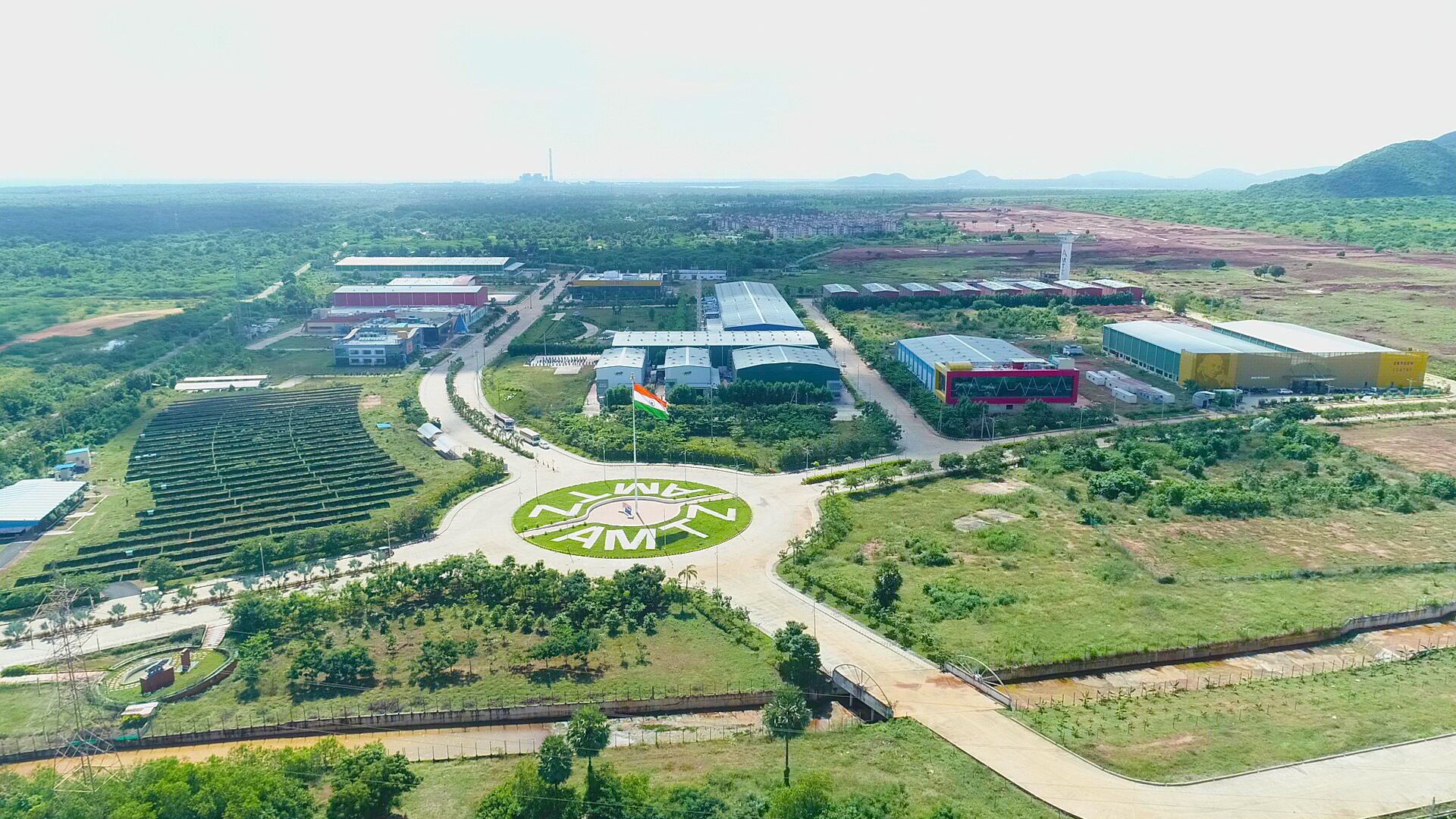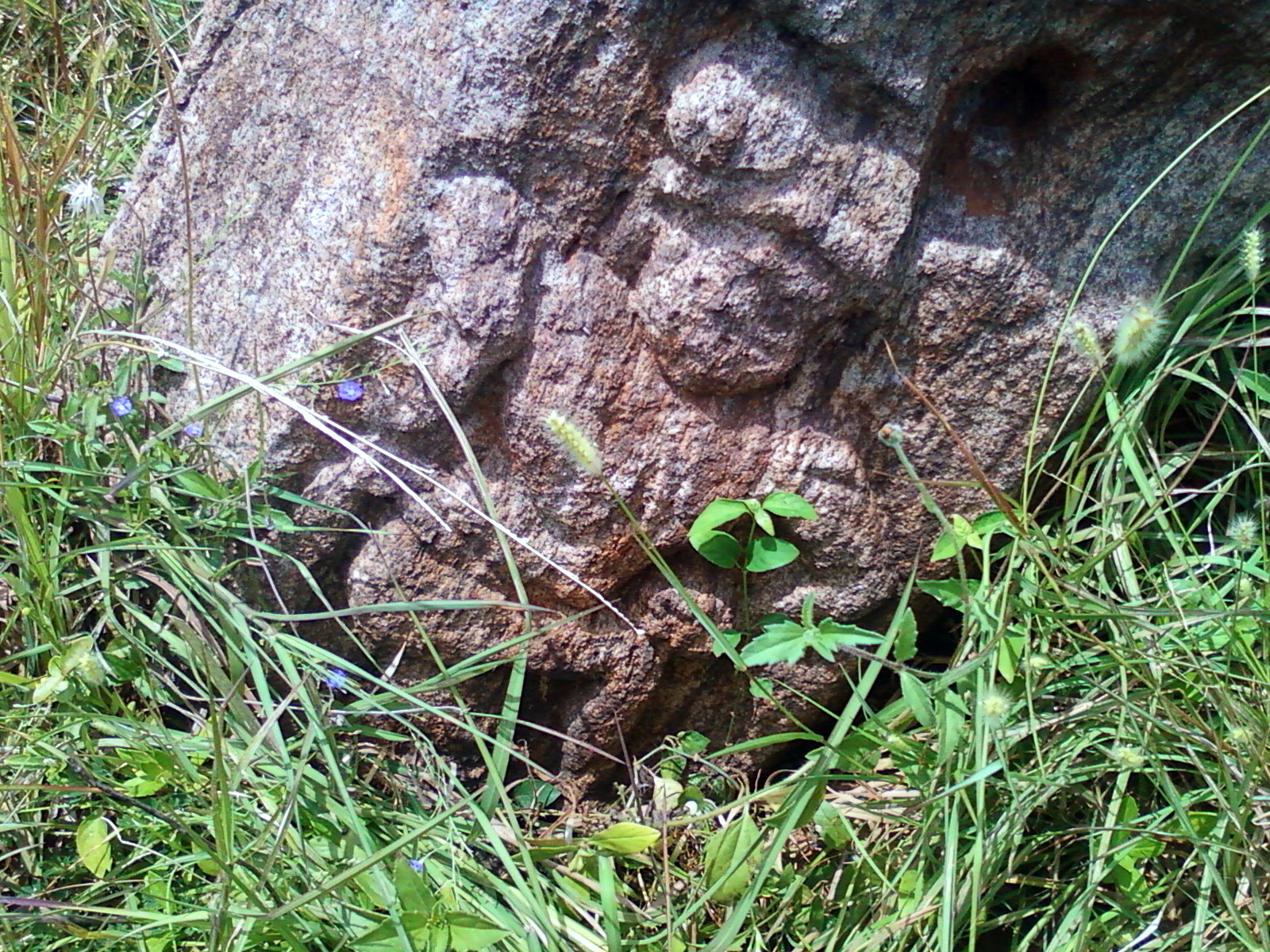|
Andhra Pradesh Medtech Zone Limited
Andhra Pradesh MedTech Zone (AMTZ) is the medical technology park with Common Manufacturing Facilities & Common Scientific Facilities located in Nadupuru village area of Visakhapatnam, adjacent to the Visakhapatnam Steel Plant. The AMTZ is spread over an area of 270 acres and it has over 10 manufacturing units. It currently houses the Bio Valley Incubation Council, funded by the Department of Biotechnology, and the Kalam Institute of Health Technology. In April 2020, the AMTZ has started making rapid testing kits for COVID-19 and planned to start the manufacture of ventilators. History Andhra Pradesh Medtech Zone was first conceptualized in November 2015 as India's first medical device park . Decision to establish was taken after a meeting with representatives of Indian medical device industry, state and union govt officials. In 2015 medical device industry is worth 60,000 crores of crore of this 23,000-crore worth of medical device were imported. To reduce import bill. in ... [...More Info...] [...Related Items...] OR: [Wikipedia] [Google] [Baidu] |
Visakhapatnam
Visakhapatnam (; List of renamed places in India, formerly known as Vizagapatam, and also referred to as Vizag, Visakha, and Waltair) is the largest and most populous metropolitan city in the States and union territories of India, Indian state of Andhra Pradesh. It is between the Eastern Ghats and the coast of the Bay of Bengal. It is the second largest city on the Coastal India, east coast of India after Chennai, and the fourth largest in South India. It is one of the four Smart city, smart cities of Andhra Pradesh selected under the Smart Cities Mission and is the headquarters of Visakhapatnam district. Vizag is popularly known as ''shipbuilding capital of India'' due to presence of multiple shipyards such as Hindustan Shipyard, Naval Dockyard (Visakhapatnam), Naval Dockyard and being the central naval command of the east coast. Visakhapatnam's history dates back to the 6th century BCE. The city was ruled by the Satavahana dynasty, Andhra Satavahanas, Vengi, the Pallava dyna ... [...More Info...] [...Related Items...] OR: [Wikipedia] [Google] [Baidu] |
Personal Protective Equipment
Personal protective equipment (PPE) is protective clothing, helmets, goggles, or other garments or equipment designed to protect the wearer's body from injury or infection. The hazards addressed by protective equipment include physical, electrical, heat, chemical, biohazards, and airborne particulate matter. Protective equipment may be worn for job-related occupational safety and health purposes, as well as for sports and other recreational activities. ''Protective clothing'' is applied to traditional categories of clothing, and ''protective gear'' applies to items such as pads, guards, shields, or masks, and others. PPE suits can be similar in appearance to a cleanroom suit. The purpose of personal protective equipment is to reduce employee exposure to hazards when engineering controls and administrative controls are not feasible or effective to reduce these risks to acceptable levels. PPE is needed when there are hazards present. PPE has the serious limitation that it d ... [...More Info...] [...Related Items...] OR: [Wikipedia] [Google] [Baidu] |
State Agencies Of Andhra Pradesh
State most commonly refers to: * State (polity), a centralized political organization that regulates law and society within a territory **Sovereign state, a sovereign polity in international law, commonly referred to as a country **Nation state, a state where the majority identify with a single nation (with shared culture or ethnic group) ** Constituent state, a political subdivision of a state ** Federated state, constituent states part of a federation *** U.S. state * State of nature, a concept within philosophy that describes the way humans acted before forming societies or civilizations State may also refer to: Arts, entertainment, and media Literature * ''State Magazine'', a monthly magazine published by the U.S. Department of State * ''The State'' (newspaper), a daily newspaper in Columbia, South Carolina, United States * '' Our State'', a monthly magazine published in North Carolina and formerly called ''The State'' * The State (Larry Niven), a fictional future governmen ... [...More Info...] [...Related Items...] OR: [Wikipedia] [Google] [Baidu] |
Infrastructure In India
Infrastructure is the set of facilities and systems that serve a country, city, or other area, and encompasses the services and facilities necessary for its economy, households and firms to function. Infrastructure is composed of public and private physical structures such as roads, railways, bridges, airports, public transit systems, tunnels, water supply, sewers, electrical grids, and telecommunications (including Internet connectivity and broadband access). In general, infrastructure has been defined as "the physical components of interrelated systems providing commodities and services essential to enable, sustain, or enhance societal living conditions" and maintain the surrounding environment. Especially in light of the massive societal transformations needed to mitigate and adapt to climate change, contemporary infrastructure conversations frequently focus on sustainable development and green infrastructure. Acknowledging this importance, the international community has ... [...More Info...] [...Related Items...] OR: [Wikipedia] [Google] [Baidu] |
I HUB
I, or i, is the ninth letter and the third vowel letter of the Latin alphabet, used in the modern English alphabet, the alphabets of other western European languages and others worldwide. Its name in English is ''i'' (pronounced ), plural ''ies''. Name In English, the name of the letter is the "long I" sound, pronounced . In most other languages, its name matches the letter's pronunciation in open syllables. History In the Phoenician alphabet, the letter may have originated in a hieroglyph for an arm that represented a voiced pharyngeal fricative () in Egyptian, but was reassigned to (as in English "yes") by Semites because their word for "arm" began with that sound. This letter could also be used to represent , the close front unrounded vowel, mainly in foreign words. The Greeks adopted a form of this Phoenician ''yodh'' as their letter ''iota'' () to represent , the same as in the Old Italic alphabet. In Latin (as in Modern Greek), it was also used to represent ... [...More Info...] [...Related Items...] OR: [Wikipedia] [Google] [Baidu] |
World Health Organization Collaborating Centre
World Health Organization collaborating centres are institutions that work with the World Health Organization (WHO) in disciplines such as occupational health, food safety, and communicable disease prevention. There are over 700 such centres across 80 countries. Collaborating centres may be research institutes, parts of universities, or academies. The participating institutions partner with WHO to perform research, provide training, or offer other services in furthering the WHO health agenda. These partners are designated by the WHO director-general as a part of a collaborative network. By using networks of established organizations, WHO is able to strengthen the scientific validity of its work and lower the costs of research. Centres worldwide The World Health Organization has established networks related to a variety of health topics. For example, WHO has put in place centres focused on organ transplants, hearing loss prevention, hepatitis, leprosy, medical ethics, and maternal he ... [...More Info...] [...Related Items...] OR: [Wikipedia] [Google] [Baidu] |
Think 3D – 3D Printing Facility
In their most common sense, the terms thought and thinking refer to cognitive processes that can happen independently of sensory stimulation. Their most paradigmatic forms are judging, reasoning, concept formation, problem solving, and deliberation. But other mental processes, like considering an idea, memory, or imagination, are also often included. These processes can happen internally independent of the sensory organs, unlike perception. But when understood in the widest sense, any mental event may be understood as a form of thinking, including perception and unconscious mental processes. In a slightly different sense, the term ''thought'' refers not to the mental processes themselves but to mental states or systems of ideas brought about by these processes. Various theories of thinking have been proposed, some of which aim to capture the characteristic features of thought. ''Platonists'' hold that thinking consists in discerning and inspecting Platonic forms and their inter ... [...More Info...] [...Related Items...] OR: [Wikipedia] [Google] [Baidu] |
Superconductivity
Superconductivity is a set of physical properties observed in superconductors: materials where Electrical resistance and conductance, electrical resistance vanishes and Magnetic field, magnetic fields are expelled from the material. Unlike an ordinary metallic Electrical conductor, conductor, whose resistance decreases gradually as its temperature is lowered, even down to near absolute zero, a superconductor has a characteristic Phase transition, critical temperature below which the resistance drops abruptly to zero. An electric current through a loop of superconducting wire can persist indefinitely with no power source. The superconductivity phenomenon was discovered in 1911 by Dutch physicist Heike Kamerlingh Onnes. Like ferromagnetism and Atomic spectral line, atomic spectral lines, superconductivity is a phenomenon which can only be explained by quantum mechanics. It is characterized by the Meissner effect, the complete cancellation of the magnetic field in the interior of the ... [...More Info...] [...Related Items...] OR: [Wikipedia] [Google] [Baidu] |
Superconducting Magnet
A superconducting magnet is an electromagnet made from coils of superconducting wire. They must be cooled to cryogenic temperatures during operation. In its superconducting state the wire has no electrical resistance and therefore can conduct much larger electric currents than ordinary wire, creating intense magnetic fields. Superconducting magnets can produce stronger magnetic fields than all but the strongest non-superconducting electromagnets, and large superconducting magnets can be cheaper to operate because no energy is dissipated as heat in the windings. They are used in Magnetic resonance imaging, MRI instruments in hospitals, and in scientific equipment such as Nuclear magnetic resonance, NMR spectrometers, mass spectrometers, Fusion power, fusion reactors and particle accelerators. They are also used for levitation, guidance and propulsion in a SCMaglev, magnetic levitation (maglev) railway system being constructed in Japan. Construction Cooling During operation, the ... [...More Info...] [...Related Items...] OR: [Wikipedia] [Google] [Baidu] |
Diode - AMTZ
A diode is a two-terminal electronic component that conducts electric current primarily in one direction (asymmetric conductance). It has low (ideally zero) resistance in one direction and high (ideally infinite) resistance in the other. A semiconductor diode, the most commonly used type today, is a crystalline piece of semiconductor material with a p–n junction connected to two electrical terminals. It has an exponential current–voltage characteristic. Semiconductor diodes were the first semiconductor electronic devices. The discovery of asymmetric electrical conduction across the contact between a crystalline mineral and a metal was made by German physicist Ferdinand Braun in 1874. Today, most diodes are made of silicon, but other semiconducting materials such as gallium arsenide and germanium are also used. The obsolete thermionic diode is a vacuum tube with two electrodes, a heated cathode and a plate, in which electrons can flow in only one direction, from the ca ... [...More Info...] [...Related Items...] OR: [Wikipedia] [Google] [Baidu] |




